
Final Fantasy XVI Review
I won’t sit here and tell you I’ve been with the Final Fantasy series my entire life. My first entry was Crystal Chronicles, and then I didn’t really return to the series properly until my teenage years. The first mainline Final Fantasy launch that I was a conscious enough RPG fan to go out and buy on day one was probably Final Fantasy XV. I had a lot of catching up to do at the time, and ultimately have come to the conclusion that even the weakest of games in the franchise have a lot to offer. It’s a uniquely malleable property.
Final Fantasy has been a lot of things across its lifespan to a lot of different people. While FF15 wasn’t the first time the series strayed away from its turn-based roots, it was the first time a mainline entry was primarily more action-based. Years later, Final Fantasy XV feels like a hesitant half-step in retrospect. It exhibits an identity crisis in trying to balance being an action game, being an open-world game, and being an RPG. Post-launch updates adding scenes from the Kingsglaive movie, strange collabs, and even some new mechanics entirely ultimately led to an entry that simply felt confused.
Final Fantasy XVI, on the other hand, is nothing if not confident in its design. Within even its first hour, it is very clear what the goals were for the team working on it. FF16 is an action RPG where the ‘action’ takes center stage, but one that doesn’t wholly forget its roots. The team who made this clearly adores Final Fantasy, even if they have a clear disposition toward a grittier and more grounded take.
This sort of confidence inevitably becomes a double-edged sword. It knows exactly to whom it is trying to appeal to, which means others will get left by the wayside. But for longtime Final Fantasy fans, I doubt this is a new feeling entirely.
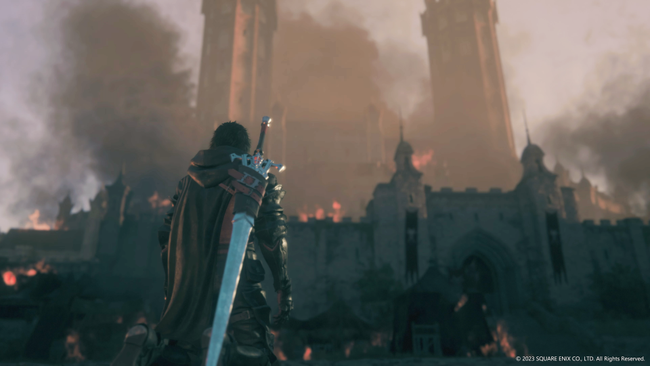
After years of speculation, now finally sitting down and actually playing through FF16, I’m left largely positive about the experience. It doesn’t merely feel like some action game wearing the skin of a Final Fantasy title. It feels like a character action game that smartly adapts classic Final Fantasy elements into its very core. Even when its RPG mechanics are struggling to connect, it’s a brilliant Final Fantasy - which is certainly no mean feat.
FF16 borrows much from a particular sub-genre of the action game, and has much in common with hallmark titles such as Devil May Cry, Bayonetta, and Metal Gear Rising Revengeance. Ryota Suzuki, a designer on Devil May Cry V, was even brought on board to be XVI’s combat director. As a fan of these games, the idea of a mainline FF that resembles these games always excited me. To some this is blasphemy, but I think it fits. FF combat can be whatever it needs to be, so long as it’s cohesive and fits the narrative the game is offering. In this instance, we have a tale of revenge against power structures that viciously oppress a minority group. You could tell this type of story in a turn-based RPG, and several have, but I’d be lying if I said it didn’t feel extra good being the one to press buttons in time with Clive’s tenacious sword strikes as he overwhelms anyone who opposes his mission to make a better, fairer world.
On a simpler level though, I realized only a few hours into my 65-hour playthrough of FF16 that… wow, we haven’t had a new DMC game in nearly half a decade. DMC5 wasn’t a perfect game, but it had evident heart and soul, which really matters to me. FF16 actually lands in a similar camp. It has issues, some more significant than others - but I had an absolute blast with it.
I’ll start with my boldest statement, and we can work down to some nuance as we go. Final Fantasy XVI is the best feeling action game I’ve ever played. While mechanical intricacy is important, none of it matters if the game doesn’t feel good. FF16 is not lacking complexity, but it truly excels when it comes to game feel.
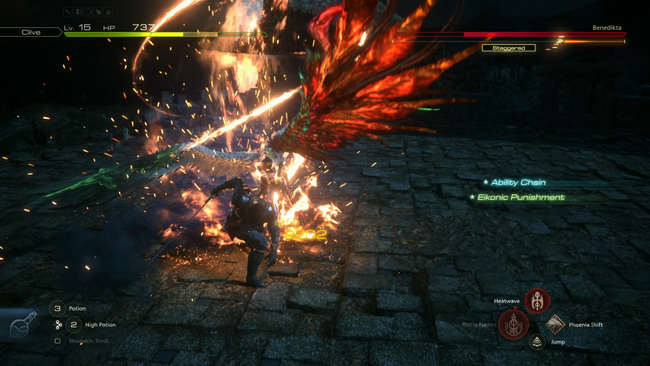
Spectacle has been important to Final Fantasy for decades, and nearly twenty years on from Advent Children, its shadow still looms large. Square has never been able to back away from the idea of making a playable version of it. Often this has resulted in combat where the player feels more like a passenger rather than a participant, as was sometimes the case in FF13 & FF15. In FF16, excellent work has clearly been put into making the battle system flashy without wrestling control from the player. Combos, moves, and special abilities feel snappy and flow wonderfully together.
One element that has been adapted into this gameplay style is the idea of Summons and their implementation merges with the concept of classic FF class changing. In the world of Valisthea, the classic FF summons (Ifrit, Shiva, Titan, Odin, etc) are known as Eikons and are bound to ‘dominants’, their human hosts. Dominant of Ifrit and FF16 protagonist Clive has a unique ability that allows him to ‘attune’ powers from Eikons other than his own. Each time Clive does this, he gains a selection of new moves.
There are seven base Eikon sets for Clive to collect throughout the game, though he can only equip three of them at once. Each of these Eikons has a main ability mapped to the circle button, and a handful of customizable special abilities that can be mapped to two of the attack buttons, making for six total equippable skills. He starts with only the Phoenix, giving him access to the Phoenix Shift to close the gap between him and enemies. The further into the story you get, the further Clive’s kit expands dramatically, such as Garuda being able to pull enemies closer to you and Ramuh being FF16’s answer to the Shotlock from Kingdom Hearts. Possibly my favorite addition to Clive’s repertoire is Titan’s shield, adding a block button into a genre that doesn’t typically utilize it.
Both Devil May Cry and Bayonetta focus more on dodges, and for a long while I had assumed FF16 would be in the same camp. Pulling off FF16’s perfect dodges and counters feels fantastic, so I had no issue with this. I especially love a particular accessory you can unlock later in the game that adds a dramatic flare to your dodge animation and increases your attack for a short window afterward. But when I found out Titan was essentially just a full-on block button? I feel like something clicked in place. For beginners this will be a godsend, giving them some kind of protection if they haven’t mastered timing dodges. For the expert, this is yet another way to maximize a high-risk high-reward playstyle. Charging right into the most dangerous enemy, blocking at the last possible moment, and then countering with Titan’s now powered-up special abilities was always satisfying.
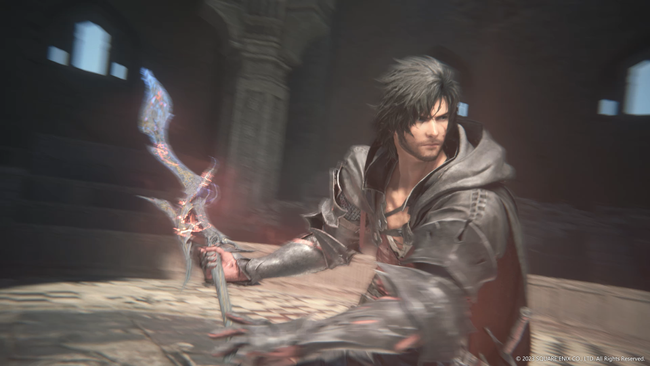
I think my favorite part of Final Fantasy XVI’s combat system is how much freedom it gives you to customize Clive’s moves. While you can only equip three base Eikon abilities, your two action slots for that Eikon can be filled with any currently mastered move. You upgrade your abilities with skill points earned from battles and quests, and you can upgrade almost all of them twice. The first upgrade makes abilities stronger, but the second ‘masters’ them - and I was about halfway into my playthrough before I realized how useful this could really be.
Take Garuda for example. The grab ability is great for both pulling fodder monsters closer or slamming bosses down to your level when their stagger bar hits the halfway point. I don’t think Garuda’s other abilities are very useful, however. They can build stagger efficiently enough, but by the late game, they just felt like a waste of ability slots. That was solved easily by just replacing its moves with more interesting ones from Ramuh and Bahamut.
But that might just be me. There are numerous different moveset combinations you can equip your Clive with, and with 7 different Eikon sets to choose from, it will let you experiment to your heart's content. I personally never got rid of Phoenix, and finished the game off with Odin and Shiva as my two other Eikons. I gave up defense entirely for speed, dodging, and brutal counterattacks. If you’re a ‘systems’ focused RPG player, this is what FF16 has to primarily offer you - a crunchy, satisfying combat system that is more open-ended than in other action games, if not as expansive as skill trees in more traditional RPGs.
In addition to this, Clive’s natural abilities as a dominant of Ifrit come in the form of a Limit Break. Clive has a bar below his health which will rise as he deals and receives damage. When at least one of the segments of this bar is full, he can transform into a powered-up form to enhance his abilities to deal more damage. In-universe, this act is called ‘part-Priming’ - invoking part but not all of the transformation into an Eikon. This mechanic seems to be heavily inspired by DMC’s ‘Devil Trigger’, and is an ability used by several characters throughout the game.

I think the boss battles, overall, are a home run with a couple of caveats. The design of these fights is consistently fantastic. They’re exhilarating and beautiful spectacles fitting of an already gorgeous game. Even the best character action games can often fumble the execution of boss fights, with Devil May Cry V’s non-humanoid fights coming to mind. Typically this is because it can be hard to tell when large monsters will telegraph their attacks, leading to frustrating bouts that come across as unfair in ways unintentional.
There’s a little bit of this in FF16, especially during the Eikon fights - but Creative Business Unit III used their experience designing MMO boss battles to essentially introduce AOE markers to the character action game formula, and I think this was done to excellent results. Whether you dodge in the nick of time or fail to, the result always feels fair. This is one of those concessions for newer action game players that just generally resulted in a better game experience.
Final Fantasy XVI has some of the best bosses I’ve ever faced off against, and that includes the unique Eikon fights. These are raw spectacle taken to the extreme, removing any stat advantages you might have from normal combat. You just have two Kaiju-sized monsters duking it out, and they’re frankly awesome. These encounters feel like full-on levels at points, and I legitimately found myself getting off of my couch and standing up in front of my TV as if I were a child.
These are the moments where FF16 really leans into its action game roots, very self-aware of where it stands in that regard. When it’s time to become a fun video game, it’ll let itself lean in all the way on the fun. Final Fantasy has never been this flashy, this extravagant. The designers clearly had a great time and wanted you to feel the same. I swear, there’s a moment, shown in pre-release trailers, where you’re sprinting up Titan as if Ifrit was Sonic the Hedgehog. I giggled, I cheered, and I clapped the entire time.

Where boss design is at its most divisive is in a system called Cinematic Clashes, where fancy cutscenes will play and will show context-sensitive quick-time events. Action game fans who despise when the gameplay takes a backseat will probably find these distasteful. If Clive needs to dodge, he’ll press the dodge button. If Clive needs to deliver a dramatic blow, he’ll press the attack button. And of course, no action game QTE could be made in 2023 without a prompt that makes you sit there and cause slow-burn controller damage by mashing one button for like 10 seconds.
Here’s the thing though - my most heretical take as a lifelong action game fan. I love Final Fantasy’s insistence on cutting up its gameplay with cinematic roller coasters. I can’t imagine a modern FF game without them, and wouldn’t want one. I’m neutral on quick time events in general, but typically feel they can function as effective transitions between boss phases. FF16 was able to keep my attention so often because it’d give me these fun little moments of badass fight choreography dispersed between some stellar combat encounters. I don’t think they even pop up often enough for them to be ruinous to the pacing of boss battles, but I know these events exist at all might be a big sticking point for some.
As spectacular as boss fights are, I think they highlight a staple of the modern era of FF games that hasn’t been implemented in the best of ways. The stagger bar was introduced in Final Fantasy XIII as a way to make turn-based combat feel more active. By attacking in quick succession, you’ll fill up a bar for enemies. When the bar is maxed, the foe will be caught off guard for a small window, where subsequent attacks will do more damage during a sort of burst window. For almost all of the more action-oriented FF titles to come out since, a version of this mechanic has been here, including Stranger of Paradise and FF7 Remake. In FF16, bosses and mini-bosses all have stagger bars. Staggering certainly does add more layers to the combat system, which is great, but has an unfortunate side effect.
An important question: does Final Fantasy XVI have a good battle system? Absolutely. Is it good enough to hold up a 40-60 hour RPG without a shred of boredom creeping in? …Not exactly. At a certain point, staggering gives way to optimal strategies and encourages repetitive play. Because most of the damage dealt to a boss happens during these staggered states, you learn to save your Limit Break until this phase and then mash out all your strongest abilities in quick succession.

As customizable as Clive’s moveset is, I found myself sticking to what worked because I didn’t have a reason to switch over to other things. Add this up with lacking enemy variety, and I think completionists may find it hard to maintain their levels of enthusiasm for the entire runtime. There’s a reason why most action games are only about 10 hours long, and not 30 hours minimum. The attempt made to get this formula working for a game this long was certainly commendable, at the very least. Given how pitifully easy FF16 is, I think an extra difficulty level selectable from the beginning could help a lot, but with a special New Game + difficulty that serves as a remix of the main campaign, I guess I can’t complain too much. Should that probably have just been part of the main campaign? Sure, but at least there’s a reason to come back. Make no mistake, I’ll definitely be doing that.
Even when the encounters aren’t 100% on-point, there is one part of the game that never falters. FF16 has its own built-in hypeman, there to always keep your energy at 11/10. This is none other than one of Square Enix’s best current composers: Masayoshi Soken. Without any bit of exaggeration, I think this is his best soundtrack yet. That’s a high bar, especially after 2021’s Endwalker expansion for Final Fantasy XIV, but I’m confident in this assessment. When I found out there were a whopping 7 discs of OST coming out next month, I wasn’t surprised in the slightest. There’s a lot of music in this game, and pretty much all of it is breathtaking.
In its structure, FF16 is split into two different styles of play: something I like to call “Linear AAA Set Piece Action” and zone-based exploration maps. The former are essentially FF16’s answer to dungeons, heavily designed gauntlets that exist to progress the story forward. This could be a cave, a forest, or maybe even a city under siege. They feel like traditional action game stages, linear maps that funnel you into rooms of progressively harder enemies to style on and test combos with. They’re fun, and the set pieces are wildly entertaining. There’s even an option to replay any of them from a menu accessible in your base, in case you miss a chest or just want to recapture the thrill of your favorite level.
The open zones, on the other hand, are an answer to the inherent problems of full-on open-world design, focusing on tightly built areas to explore instead of large empty spaces. This is a great approach, another carry-over from FF14’s level design that makes its world feel large but not pointless - though some will doubtless balk at the nature of these maps, where linear corridors connect larger, more exploration-friendly blobs.
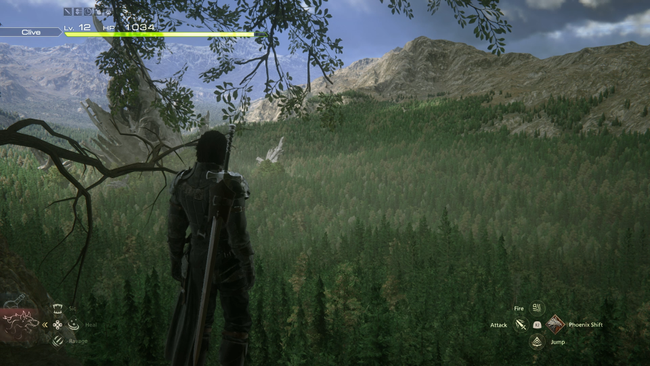
This is nevertheless where the game feels the most like an RPG, letting you talk to NPCs and take on quests. You can find treasure chests hidden around these maps, typically full of loot or gear, but I found these often not worth the extra work. Behind its combat stylings, Final Fantasy XVI does have a lot of loot and RPG elements, and they’re mostly serviceable. You can craft weapons and buy items, but by the end of the game, I had so much gil and material I just didn’t know what to do with it all. It often feels like its traditional RPG elements are also one of FF16’s weaker aspects.
Without the loot grind or more compelling side quests rewards to drive me, the primary reason I had to explore was, simply put, intrinsically motivated. Final Fantasy XVI is a gorgeous game - probably one of the best-looking I’ve ever played. I fondly remember early on standing on a cliff looking out at a vast forest, and just wishing I could jump off that cliff and wander through it all. Exploration is curbed, as noted above, but what is there is beautiful.
I wouldn’t argue that XVI is consistently gorgeous, because it is very obvious when the models decrease their fidelity to work for stiffer animations on less important cutscenes. But its environments never fail to impress, and the many various skill & spell effects are gorgeous. With some extra QOL in the visual presentation and performance, this game could shape up to be even better and I can’t wait to revisit it when that happens.
Those graphics come at a slight cost, though, with performance mode never consistently hitting 60 FPS. I couldn’t tell you what the actual numbers are, but I found it to be largely playable despite a notably varying framerate. A day-one patch has been released at the time of publishing review that is meant to optimize the performance, but testing it didn’t feel like much of an improvement. I personally prefer an uncapped framerate to one locked at 30, and that was the way I also played and enjoyed all of XV back in the day on my PS4 Pro. In years to come, this talk of performance won’t matter, as XVI is bound to eventually hit 120 fps on your very nice computer. Another member of the RPG Site team played the game entirely in Quality mode and notes that it looked and ran mostly great for him for the whole experience. So if you need that consistency in your life - that’s the mode to go for.
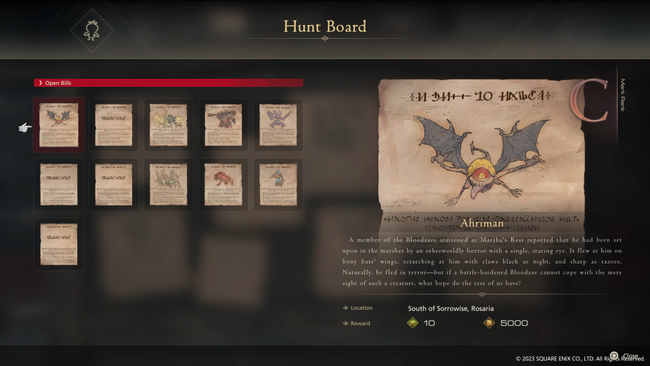
I imagine FF16’s side content will be a hot-button issue, specifically the quests. The development team, Square’s internal Creative Business Unit III, is known primarily for making MMOs - and there’s a lot of MMO DNA in this quest design. Here’s an example of a quest in XVI:
I talk to one of Clive’s companions in the Hideaway’s mess hall. He tells me to talk to the Blacksmith who is going through a rough spot. I slowly plod across the hideaway (no sprinting in the base!) to check in on him. He tells me to talk to another NPC in the hideaway, who I also amble over to. I’m told to go hunt a monster, which I need to locate by using the Hunts Board, which is in another area of the base - so more walking. Target acquired, I teleport to the open zone where the mark is, find it, and kill it. After doing this, I talk to another NPC near it. I return to the blacksmith, unlocking a new crafting recipe.
This kind of quest format is repeated again and again. You’ll talk to a series of marked NPCs and eventually get into a fight. You’ll then return to the original NPC and finish the quest. Some people are inevitably going to hate this. But in the grand scheme of things, the game’s quest structure is a non-issue for me. Some of you FF14 fans probably rolled your eyes immediately at the idea of me complaining about MMO-styled quests, but I’m with you! I completed every single bit of side content in FF16, and there’s a lot of it. The most important thing a quest should be, at least to me, is a vessel to deliver story and world-building. The context of that quest I mentioned, the story it told, and the person I helped, were the parts I valued.
FF16’s writing quality for side content is commendable, so much so that I’d recommend doing as much as you can, if not all of them. For those who care little for the story, these quests will likely seem like a bore since they share similar structure and aren’t always as fun as the main campaign. But thematically, they largely represent the pockets of good that exist in the systematically broken world of Valisthea. Many quests showcase why our protagonist is motivated to keep doing what he does, to help people in need. That’s pretty typical in most RPGs, but because this world is painted in such a harsh light, it these softer moments, often in side content, shine all the brighter.
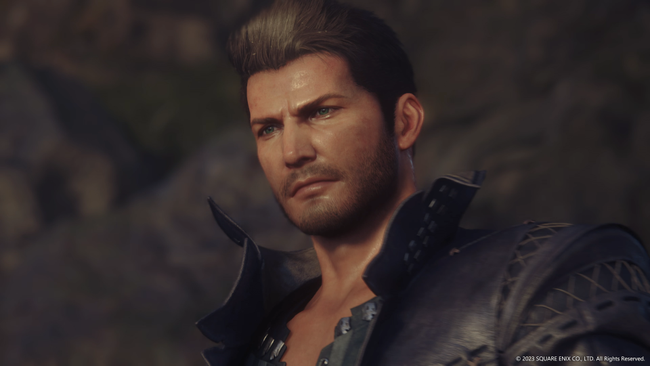
A lot of the supporting cast, all of which I adore, have their arcs tied to side quest chains. These quests feel integral to the world around them, and I adored the writing in all of them. Otto, who I would essentially call the hideaway’s dad, has a particularly touching resolution to a series of quests that I’m sure will make plenty of people cry. Gav, Clive’s best friend, is the kind of guy who will likely become a fan favorite due to his role in the main and side quests. Cid? Probably the best one in the franchise. Lastly, the backstories for lovely characters like Charon and Goetz are locked behind quests so only those dedicated will be able to see them. A key theme of FF16 is the idea of building a community to fight against oppression, and making the player work towards making the world a better place in smaller-scale conflicts as a part of that is brilliant.
Having said that, maybe some quests (both main and side) could have been a smidge less tedious. I enjoy a good walkabout in my video games, but some of them do tend to drag just a bit. The Hideaway probably should have had some fast-travel nodes. If you’re listening, Square (which you might not be, I’m still waiting for you to get back to me on letting me name characters after myself in Dragon Quest games), this should definitely come in a patch.
The best side content undoubtedly comes in the hunts, where you’ll track down ‘Notorious Marks’, unique boss monsters scattered across the world. When I say unique, I don’t mean entirely so - they’re always variations of bosses and enemies you’ve fought before - but each hunt encounter is bespoke nevertheless.
Once unlocked, you can check a Hunts board in your home base to see an ever-expanding rogues gallery of monsters troubling the world. You view a hunt, learn of the threat, and then head out to the open zone the bounty points you to in order to find and kill it yourself - no map markers, no waypoints. This is a nice change of pace compared to the side quests, which leave no room for interpretation for how to accomplish them. They offer fun tests of your knowledge of the zone maps, and reward exploration with a fun boss fight. Granted, some of these are mini-boss or boss variants, but after having done all of them I was left quite pleased. It makes sense this would be the best optional content, for it’s the stuff that makes the most use of FF16’s excellent combat.
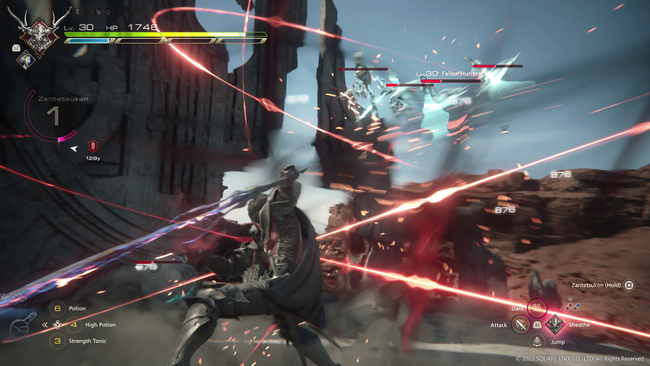
My biggest worry from the moment I was dropped into FF16’s world was how the story would handle the lofty themes it presented. The biggest fumble of any work of fiction that talks about destroying oppressive structures of power is how serious the writers are about those ideals. So many pieces of media will prop up the image of revolution to get people invested but go nowhere with it. Will they pull their punches, too afraid to stray too far from the status quo? Will the writers have enough of an understanding of systematic injustice?
Final Fantasy XVI does an admirable job in this regard. Probably the best we’ve seen Final Fantasy achieve since Tactics, its sympathies with the oppressed never crumbles and the in-universe status quo is continuously regarded as something worth destroying in its entirety. It examines the cost of revolutionary action in effective ways, and I’m impressed that it consistently posits that a society that is built on harsh inequality isn’t one worth existing.
The dark fantasy elements hit you hard right from the beginning to paint a deeply disgusting portrayal of a humanity that might not seem worth saving. The early hours are grim and dry with deep political intrigue that may confuse or alienate those who prefer a more clean-cut style of FF game. As the game goes on though, I think it truly finds itself by shifting to focus more on the core cast of characters and slightly less on the politics. This isn’t a bad thing, in my opinion. The first half exists to show the world that needs changing, and then we are left with a character-driven tale of the people who can change it. The political intrigue is never dropped entirely, and the game consistently handles its subject matter with the gravity it deserves.
Endless online discussion has droned on the topic of ‘how much of a Final Fantasy game’ this entry is, but by the end, it unquestionably deserves to bear the name. FF16 is about building a community of like-minded individuals against an oppressive and daunting force that seeks to crush those that don’t obey. What’s more Final Fantasy than that? I don’t think the story is without fault, and the pacing can feel a bit awkward at points, but its fascinating lore, interesting political drama, engaging themes, and endearing characters go a long way.
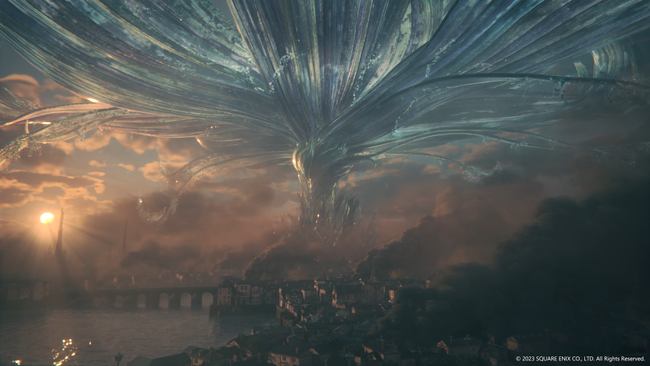
Speaking of characters, it’d be remiss to not mention just how incredible the voice cast of this game is. I’ll always go for English voices for fantasy games like this, and in this particular Final Fantasy game, it appears that English was the language this game was designed around first. The entire cast, from main to side, give brilliant performances. There’s a lot of voice acting in this game; all but the most menial dialogue is voiced. There are only a handful of optional text boxes that can appear from NPCs at your hideaway, and even those are partially voiced. Every cutscene, side quest, and background conversation you’ll find across Valisthea has voice acting in it, and that with the gorgeous visuals give the game a sense of AAA prestige deserving of the Final Fantasy name. Special credit has to be given to Clive’s voice actor, Ben Starr, who uses a nuanced performance to give a distinct feel to each of the three eras of Clive’s life shown in-game.
Clive’s background, being born as the son of a Duke and then forced to live his adult years as an enslaved soldier, put him in just the right position to give him the motivation to spark the in-universe movement to challenge these stagnant ideas. He pays clear homage to Ramza Beoulve, while having enough there to make him distinct in ways that led him to become one of my favorite leads in the franchise. His quiet demeanor, one only replaced with burning rage when the people he cares for are endangered, makes him compelling. His growth from someone out for himself to someone who works towards the greater good is simple yet effective, thanks to how much he’s written in earnest. Final Fantasy XVI talks about a lot, but Clive’s insistence to help those in need feels real. We spend the most formative years of his life with him, and he earns his motivations with ease.
The rest of the supporting cast are just as strong, especially if you’re willing to do their quest lines to flesh them out more. The Hideaway might be annoying with its lack of fast travel points, but I can’t deny that by the end it felt like a second home.
Final Fantasy XVI is undoubtedly a good game, and is probably the most consistent experience I’ve seen from the series in that last decade. Hell, probably since Final Fantasy X. But is it my favorite Final Fantasy? That’s asking the wrong questions. I’ve struggled to figure out what the right questions even were. How good of a game is it? Taste is always subjective, but FF16 feels like the sort of game that will be particularly polarizing.
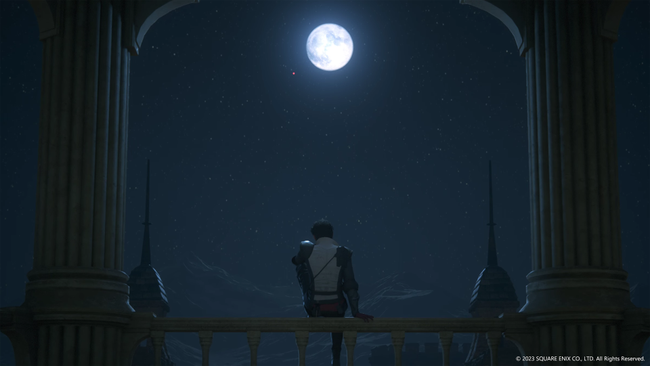
The fact Final Fantasy XVI is likely to provoke such debate - with its design systems as much as its lore, its characters as much as its story beats - is exciting. I can’t wait to analyze and dissect this flashy package in its entirety with friends. It’ll inevitably be the most fun (and, sure, occasionally exasperating) game to discuss all year. It takes many of the series’ strongest elements, both gameplay and narrative, and presents them in a genre and style that’s entirely new. It’ll absolutely not be for everyone, especially those who demand extrinsic rewards over all else - but it landed with me in ways I wasn’t expecting. The visuals are stunning, the combat is amazing, and the unbridled spectacle continued to impress even after the credits rolled. The story is touchingly earnest and thematically sound from start to finish. Not everything comes together in an ideal way, but this is a journey I won’t soon forget.
Playing Final Fantasy XVI is an exercise in weighing its elements against your own values. This is true of any game, but perhaps is even more true here due to the very nature of the game’s design. How much do you value RPG depth versus a deeply enjoyable and thought-provoking rollercoaster adventure? How comfortable are you going to be with full-blown action combat, and with the difficult themes this game expresses?
For me, FF16 was able to excel in many of the most important aspects of what video games mean to me - and because of that, I found it hard not to love in spite of its shortcomings and foibles. If someone were to offer me a laundry list of faults, I’d probably acknowledge them all with a “Yeah, that’s fair”. I can see these issues, acknowledge them, and even share frustration with them - but ultimately not find them detrimental to the parts I adore. Padding, RPG depth, quest design, the bizarre lack of a mini-map, and all those other nagging criticisms be damned - this game is special.